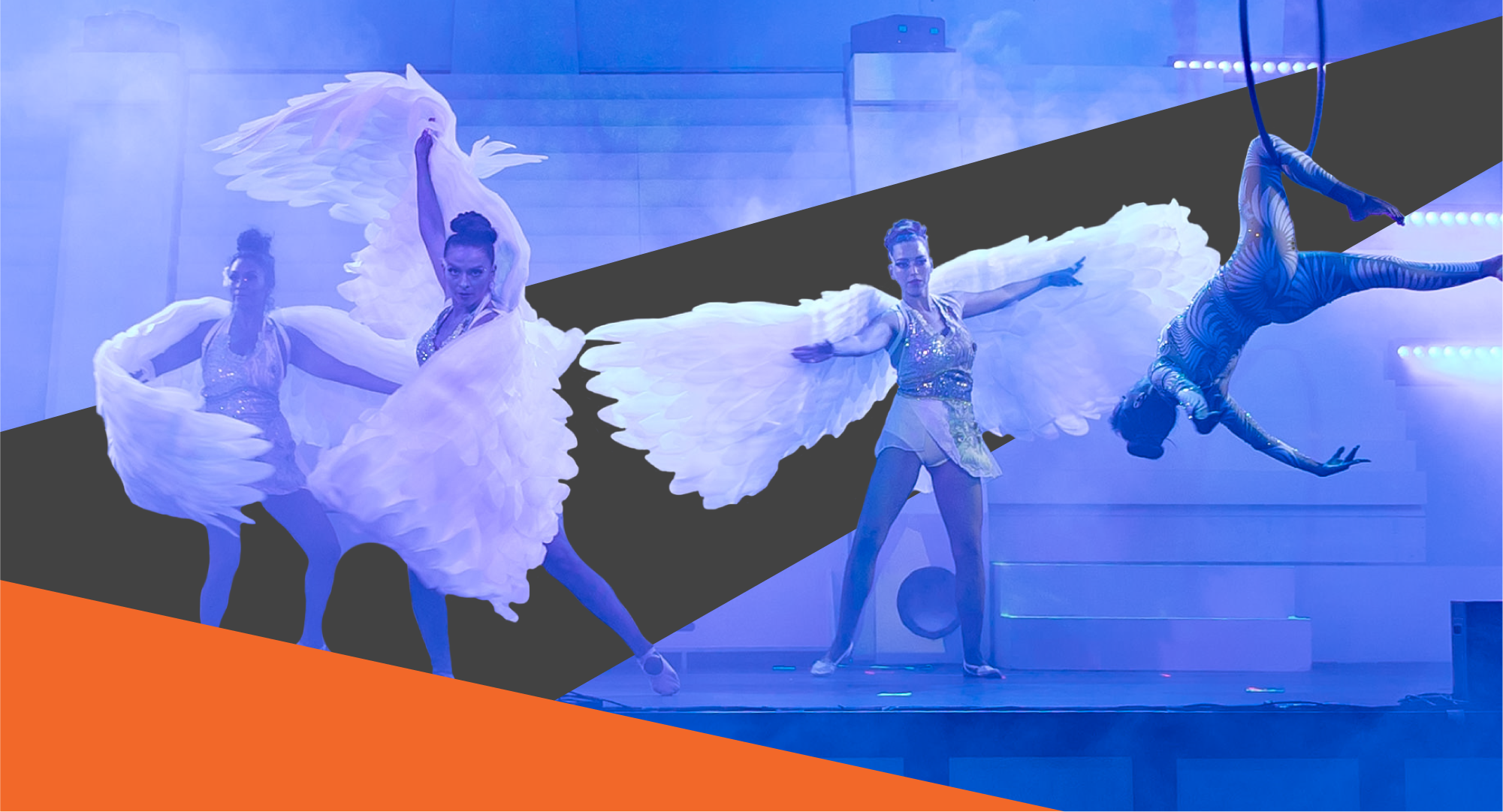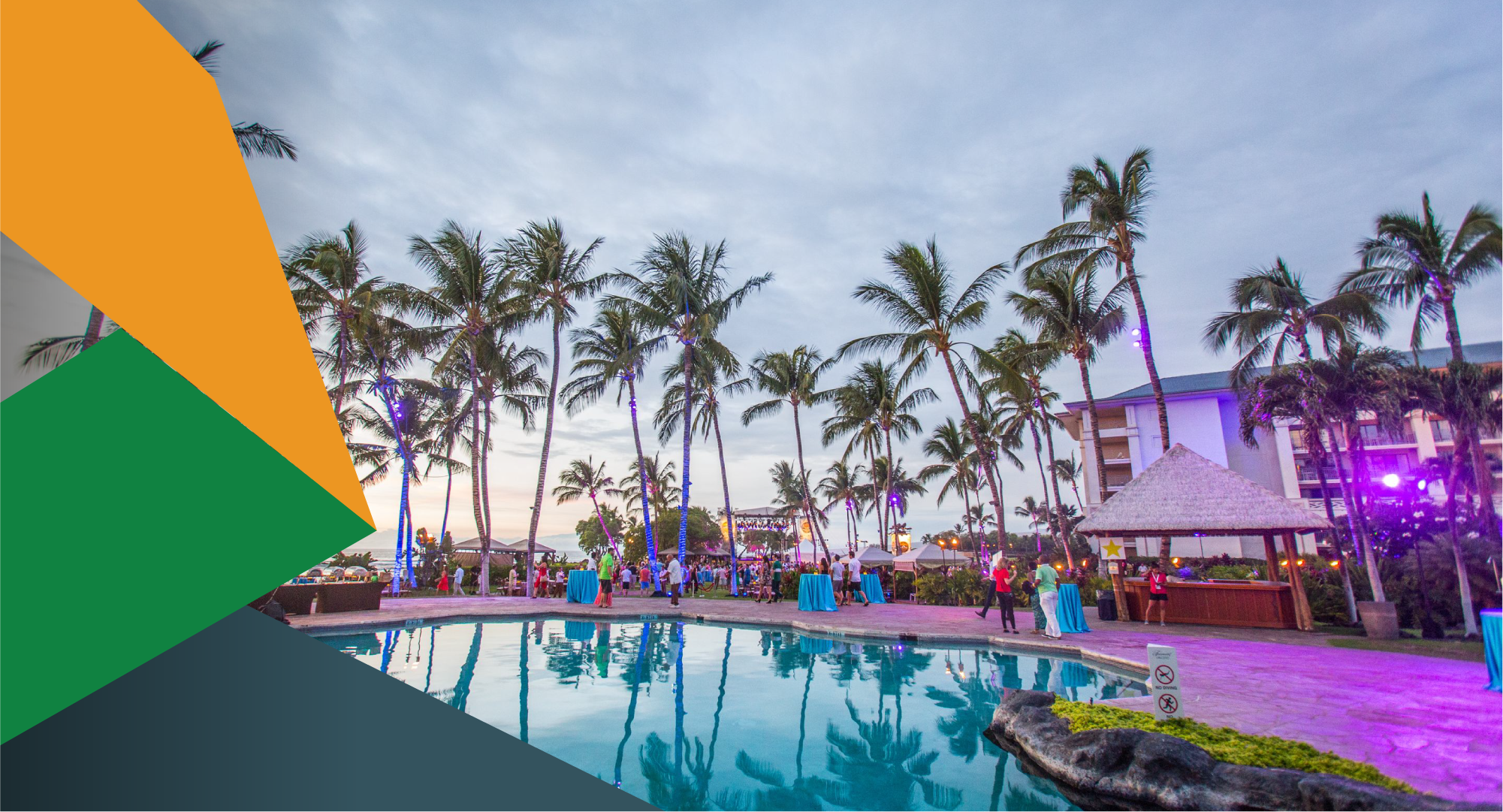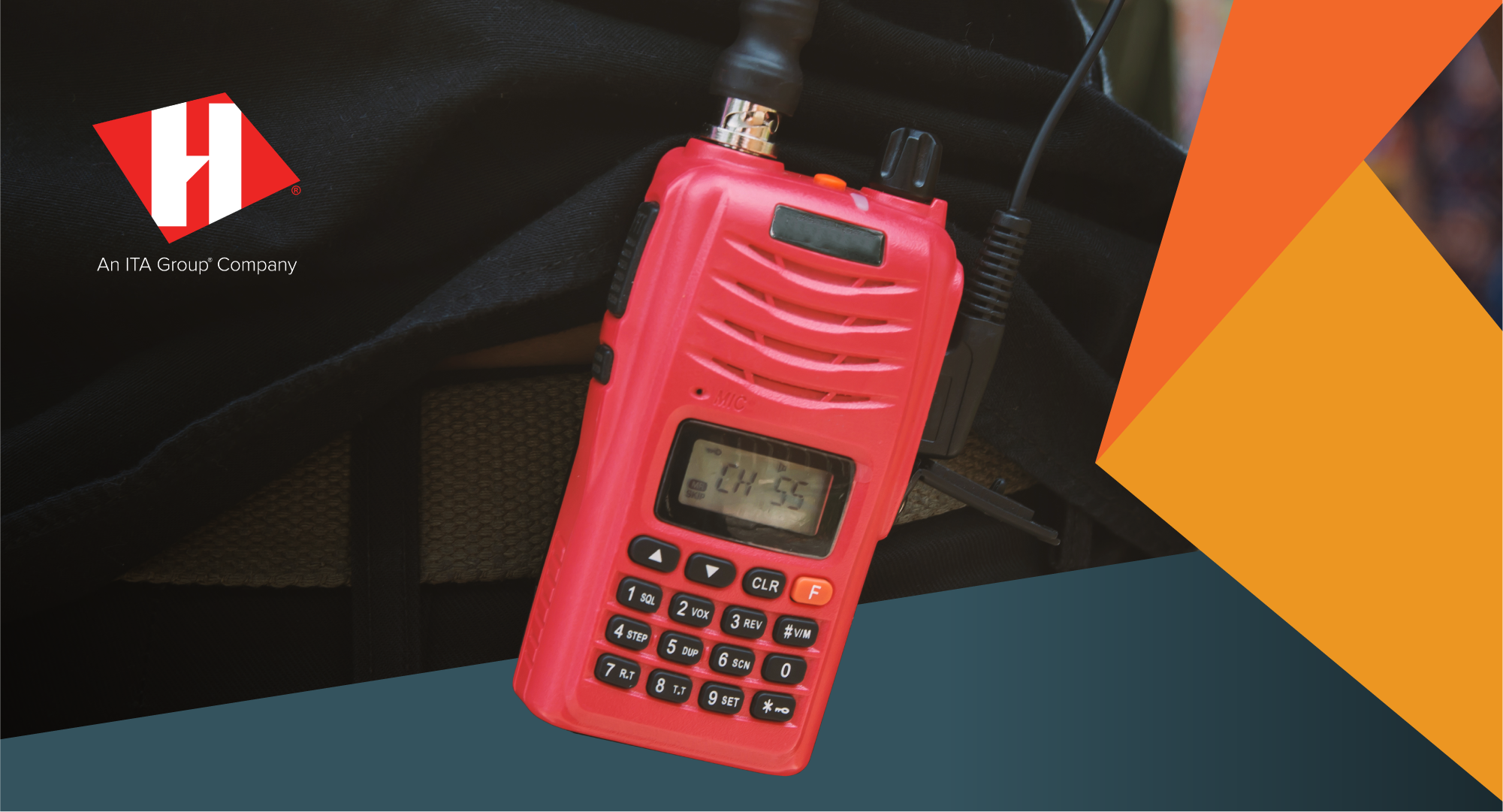How Hybrid Strategy Is Influencing The Next Generation Of Events
Wednesday August 4, 2021
12 Min Read
Welcome to our first installment of a three-part blog series.
The next generation of events is fast approaching, and it’s shaping up in unexpected ways. As a result of the heightened focus on virtual and hybrid event strategy, meetings are evolving at an exponential pace and converging technologies are taking center stage. Hartmann Studios has earned recognition for customized, immersive event solutions producing events with both live and virtual components for decades. And given our track record, we have a unique vantage point on the rapidly converging technologies.
The trends we’re witnessing first hand are not isolated, and deserve attention by anyone wanting to benefit from this event evolution. We have already seen brands who have embraced the changes in their early stages experiencing tremendously positive business impact, with plans to continue leveraging hybrid events for the foreseeable future.
To elaborate on these trends, we have reached out to some of our top industry partners, LMG, NEP Group, Brightcove, Magick Lantern, and ITA Group to share what they are observing right now that will generate a ripple effect for years to come.

Capabilities expand and technologies converge
Converging technologies have been the biggest drivers in the explosion of hybrid events. No one understands this better than one of Hartmann Studios’ longtime partners, LMG. LMG’s virtual event delivery expertise has been the perfect complement to Hartmann Studios’ customized content approach, and has ensured continuous, high-powered virtual experiences. For example, when The Climate Reality Project needed to convert their in-person event for 2,500 to a fully virtual experience for 14,000, we had the tools in place to deliver the new format in a 10-week timeline. Given the high profile for this event, and its high bar for success, Hartmann Studios and LMG were able to ensure a user-friendly and extremely engaging set of content with a global reach.
“…no one wants to give up those additional attendees…”
As Les Goldberg, Chief Executive Officer, President and Founder of LMG tells us: “There is an enormous opportunity to engage with virtual events and learn, develop, and find solutions for clients to continue to deliver their messages. It has rapidly led to the invention of the cloud studio for remote production. Next came extended reality and augmented reality stages in studios for a higher level of production for events as people became glued to their computer screens. Then came the explosion of platforms which responded to the very real opportunity to host the almost endless demand for these virtual events. As a result of this rapid change, we gained audience sizes with the scalability virtual events provided. Now it seems that no one wants to give up those additional attendees so hybrid events will be here for some time.”
We agree, the changes Les describes are here to stay. The growing range of technologies and creative solutions are actively accelerating the next generation of events.
The new logic of virtual event logistics
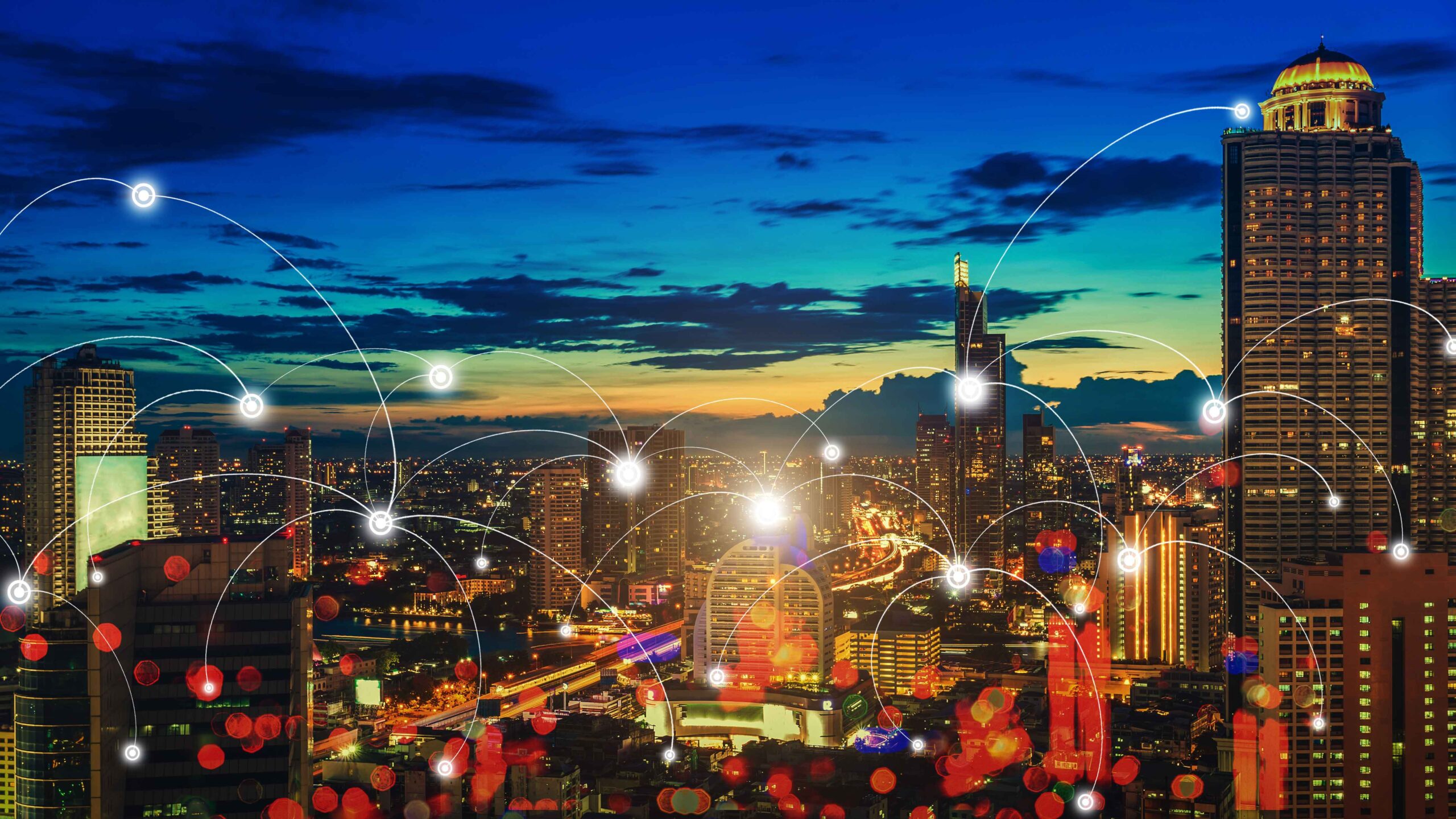
Event logistics have always been about creating the best attendee experience and that standard remains in the virtual and hybrid event world. However, both virtual and hybrid events require a new strategic approach to provide two very different audiences with equally immersive experiences. With the advent of a wide variety of technology and platforms for hosting virtual attendees, event organizers have a fresh set of options and considerations.
Managing bandwidth, access and application support is the new travel planning in a hybrid event world. These dynamics are the realm of a new breed of event logistics experts who help ensure the virtual and physical venues can support the needs of the event and size of the audience without missing a beat.
Every platform has specific strengths and the options are endless; so it is critically important to understand key objectives in a given event. The opportunities for global translation and closed captioning, chat-based networking, real-time Q&A and polling, as well as survey feedback, deepens the ability to connect with audiences.
Broadcasting quality is the new non-negotiable
Large-scale events have been dabbling in a broadcast component for several years. Now, however, broadcast events must provide equally rich, unique experiences for remote audiences as for in-person.
According to Todd Scrutchfield, VP Product Management, Virtual Production at NEP Group, “The big factor we learned…was that you don’t have to be onsite to have an impactful experience.”
He adds, “The technology that we’re utilizing began to really blossom this past year. We find most brands continue to grow their awareness of how best to leverage the capabilities that are changing almost daily.”
Companies like Scrutchfield’s help Hartmann Studios to push the envelope on creating an enhanced reality for remote audiences. They use enhanced technology so audiences can connect with an experience that feels as real as if it was in person.
“…you don’t have to be onsite to have an impactful experience.”
Every form of media can be integrated into a hybrid experience, based on long-standing augmented reality capabilities, which overlay graphics seamlessly into video. Additionally, lighter, brighter LED display systems are able to create richer virtual environments for the presenters, adding a deeper dimension to content.
Now that enhanced, augmented and virtual reality presentation environments are so readily available, it is hard to make a case for a step back. This far-reaching impact of transforming the audience experience using various media technologies is only the tip of the iceberg. In fact, a recent trends report from EventMB shares, “78.3% of respondents are currently planning in-person events with a virtual component.”
Merging personalization and virtualization

It is common knowledge that we are devouring streaming content more now than ever before (with average online video consumption increasing 85% in recent years). So, streaming is a key delivery system for hybrid events, but it is important to not stop there because simply providing access to content is only one part of the opportunity. Jim O’Neill, Director of Strategic Consulting for one of our premier broadcast technology partners, Brightcove, weighs in:
“We need to understand who is watching, how many are watching, and what they are doing while they are watching.”
“It isn’t enough any longer to get attendees on the virtual or hybrid event platform. We need to understand who is watching, how many are watching, and what they are doing while they are watching. The reason these questions are so important is that, given how much time everyone is spending already consuming streaming content, it becomes that much more important to ensure the time in an event is as valuable as we can possibly make it.”
O’Neill continues, “The way to do that is to focus on creating the most relatable content the audience wants to consume. By understanding their online behaviors during the event, we can create personalized, customized, intimate content that keeps them engaged and feeling connected.”
“We’ve crossed an abyss and it turns out it was pretty darned good.”
O’Neill adds, “We have opened up this whole new world with a much wider reach and ability to create these highly personalized events—ones that can grow ROI exponentially. We’ve crossed an abyss and it turns out it was pretty darned good. As a result, on-demand viewing and the hybrid component seems likely to become a necessary part of events for the foreseeable future. It’s called evolution, and we don’t go backward–ever.”
A picture is truly worth a thousand words
Virtual events have focused on one of our most powerful physical senses for learning and remembering: vision. Visuals have always deepened our connection to key ideas, as well as our ability to retain information. Now in the hybrid world, events must double-down visually, and do so powerfully to limit outside distractions for remote audiences. Up-leveling broadcast technology—the fastest growing content delivery system—is the answer.
When events amplify video usage, attendees remain more focused on content, more engaged in the conversation, and create stronger memories of what was discussed. So, it is no surprise that alongside the advent of virtual events, the use of motion graphics, cinematic editing and overall production standards have risen. Where previously in-person-only events tended to use video segments to support a keynote presentation, now video production is supporting a full broadcast package and feature-length shows including pre-taped segments, graphics, bumpers, teasers, and animated presentation backgrounds typically associated with prime-time television shows.
“Everyone from film festival organizers, to corporate brands, museums and product launches have had to reinvent how they communicate visually.”
“With the added content and demand of these show packages comes larger budgets, longer production cycles and massive media files,” Jim Bowhall, Vice President & Creative Director at Magick Lantern explains. “Now everyone, from film festival organizers, to corporate brands, museums and product launches have had to reinvent how they communicate visually. Many have had to design and develop a visual experience that works completely as virtual or hybrid.”
Real-time analytics take the spotlight
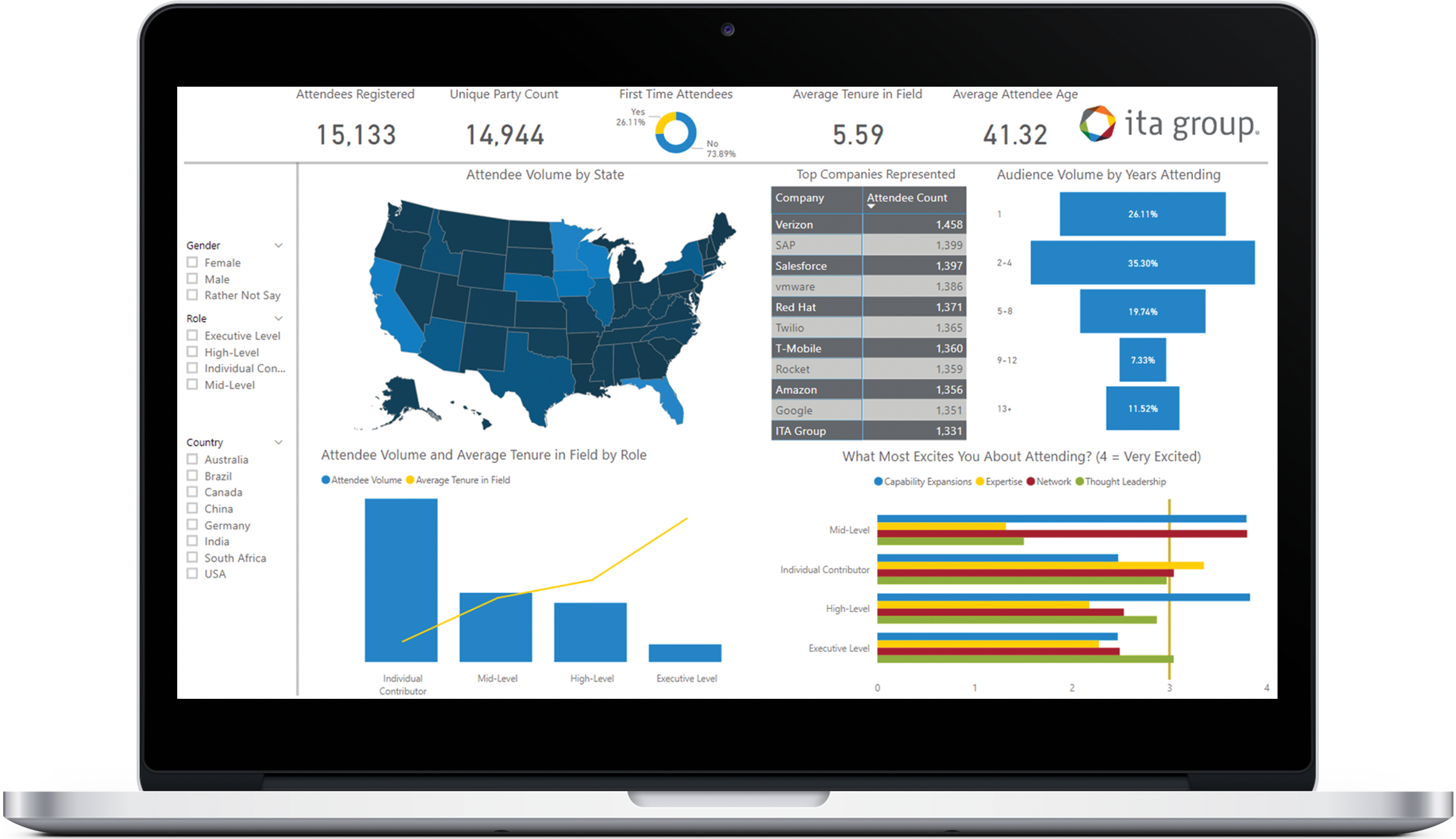
Hybrid and virtual events have generated a valuable opportunity to gain data-driven insights into attendee behaviors and needs. Hartmann Studios, as a part of the ITA Group family of companies, has unique access to expert data analytics capabilities. One such data expert is Anna Boggs, Analytics Advisor. We asked her to dive into the impact this heightened data access is having.
“Data personalization is becoming the expectation for every facet of our lives. We want everything we read to be applicable or approachable from our vantage point—and that’s how events are morphing. During the registration and agenda-building process, event marketers and creatives are collecting data about attendees and categorizing them into like-minded groups. It just feels content-rich based on the agenda blocks or role they clicked on during registration. Great events will go a step further, and continue personalizing pre-event, onsite, and post-event content based not only on the intended agenda path an attendee took but also on how they engaged during the event. Which sessions did they interact with the most? Did they participate in an in-session poll? Did they ask questions or request more information on any products or services?”
“…going deep with expertise and community with like-minded individuals is what people crave.”
Boggs notes that “…when we acknowledge the key differences and similarities of each attendee’s persona or grouping, we pave the way for a sense of belonging and collective purpose…I see that sense of community or collective purpose blossoming into more narrowly focused events that are smaller in scale, but deeper in granular content in the coming years. Skimming the surface across every content area or idea that could be discovered at an event is becoming less valued, where going deep with expertise and community with like-minded individuals is what people crave.”
Reading the (hybrid event) room
Event ROI was measurable before hybrid events peaked. Nonetheless, collecting the necessary data was a long, arduous process, and measuring intangibles, like audience mood, was almost impossible. Now virtual and hybrid events can give brands data-driven insights—both predictive and real-time—that impact event content, delivery and strategy.
“Executives are exploring how event attendees and prospects have adapted over the past year and what event updates they need to make as a result,” Boggs tells us.
“Confidence in decision making comes from event-specific data…”
“These questions are prompting a move towards bringing event data expertise to the table as a necessary path to making wise decisions, rather than an afterthought after events operate. Confidence in decision making comes from event-specific data experts analyzing and simplifying insights at the intersection of historical data, attendee perceptions, and audience growth patterns.”
So, what’s next?

The impact of virtual and hybrid meetings continues to evolve, and we believe, will shape events for decades to come. There’s no denying that the virtual and hybrid options audiences now demand are here to stay.
Event organizers are faced with more choices and higher attendee expectations than ever before. Virtual and hybrid events are shaping the future of meetings because audiences demand a more immersive experience.
With over 200 virtual events to our credit, our Hartmann Studios team has a unique perspective on what’s next for the next generation of live and hybrid events. In many ways, what’s next is what has always been next; customized solutions for every segment of an audience that continues to surprise and move audiences to action.
We will continue to explore these trends and what some of the most recognizable brands in the world are doing to leverage hybrid strategies for maximum results.
Look for our second blog in this series where we explore creative solutions to address the multitude of experiences an audience expects.
Ready to explore up-leveling your upcoming virtual or hybrid event? Contact Us today.
Read more stories
View AllAll Posts
Event Design for All 5 Senses
What you need to know When people ask about the lasting impression of an event, the question is often framed around flavor: What kind of taste did the experience leave? Content and messaging matter. But for creative event marketers who want to create a positive memory, incorporating multisensory elements is a must. Caring for the...
5 Min Read
All Posts
How Event Strategy Enhances Incentive Travel Experiences
What you need to know When top performers achieve career heights, they’re looking for more than spectacular views. Earning a corporate incentive trip signals entry into an elite circle. Especially when organizations merge luxury settings with high-impact events that participants could never coordinate on their own. Appealing to competitive personalities requires activations that go beyond...
4 Min Read
All Posts
How to Develop a Security Plan for Corporate Events
What you need to know Before attendees fully engage in an event experience, they must feel safe. That’s why security planning is foundational for successful live events, at any scale. From hosting a group of executives for an intimate dinner to a city-wide celebration in the streets: behind every seamless experience is a well-designed safety...
5 Min Read

